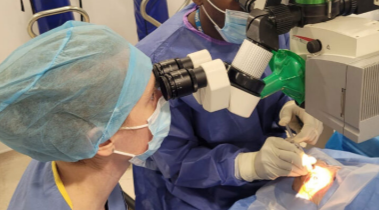How Refractive Lens Exchange Compares to LASIK and Other Procedures

Innovations in vision correction have revolutionized how we address refractive errors, offering a variety of options to suit different needs. Among the most popular choices are Refractive lens exchange and LASIK, along with other advanced procedures. Each comes with unique benefits and considerations. If you’re exploring solutions to reduce dependence on glasses or contact lenses, understanding how these procedures compare can guide you toward the best decision for your vision and lifestyle.
What is Refractive Lens Exchange (RLE)?
Refractive lens exchange, or RLE, is a surgical vision correction procedure where the eye’s natural lens is replaced with an artificial intraocular lens (IOL). RLE is particularly effective for individuals over 40 who may be dealing with presbyopia (age-related farsightedness) or have high prescriptions unsuitable for LASIK. It provides lasting results while eliminating the risk of cataracts since the IOL is resistant to age-related clouding.
Key Advantages of RLE
• Wide Range of Correction: RLE can treat nearsightedness, farsightedness, and presbyopia comprehensively.
•
• Cataract Prevention: By replacing the natural lens, RLE eliminates the need for cataract surgery later in life.
•
• Permanent Results: Unlike glasses or contacts, RLE provides a one-time, permanent solution for most patients.
•
How Does LASIK Differ?
LASIK involves reshaping the cornea using a precise laser to correct refractive errors such as myopia, hyperopia, and astigmatism. It’s an excellent option for younger individuals, typically under 40, with stable prescriptions. LASIK doesn’t involve altering the eye’s natural lens, making it a less invasive procedure compared to RLE.
Key Advantages of LASIK
• Quick Recovery: Patients often experience improved vision within 24-48 hours and can resume normal activities rapidly.
•
• Minimally Invasive: LASIK targets the outer structure of the eye and does not replace the natural lens, reducing surgical complexity.
•
• Proven Effectiveness: LASIK consistently achieves high patient satisfaction rates due to its precision and reliability.
•
Comparison with Other Vision Correction Procedures
Other procedures like PRK (Photorefractive Keratectomy) and implantable lenses also serve as alternatives but cater to specific needs. PRK, for instance, is suitable for individuals with thin corneas, while implantable lenses are an option for those who require reversible correction.
For older patients with presbyopia or early-stage cataracts, lens replacement options like RLE stand out as a more comprehensive and proactive solution. Younger patients, on the other hand, often find LASIK or PRK a better fit for their lifestyle and vision goals.
Deciding on the Right Procedure
Choosing the most appropriate procedure depends on multiple factors, including:
• Age and Eye Health: RLE is ideal for older adults, while LASIK works well for younger individuals with stable prescriptions.
•
• Vision Requirements: Patients with extreme nearsightedness or presbyopia may benefit more from RLE.
•
• Lifestyle and Recovery Expectations: LASIK offers quicker recovery, making it suitable for those needing to return to activities swiftly.
•
Consulting with an experienced ophthalmologist or eye care specialist is crucial to determine which procedure is best suited for your visual and personal needs.
A Clearer Path Ahead
Whether you’re considering RLE, LASIK, or another vision correction method, advancements in technology have made clearer vision more attainable than ever. By understanding the strengths and considerations of each procedure, you can make an informed choice that aligns with your lifestyle and long-term vision goals.


